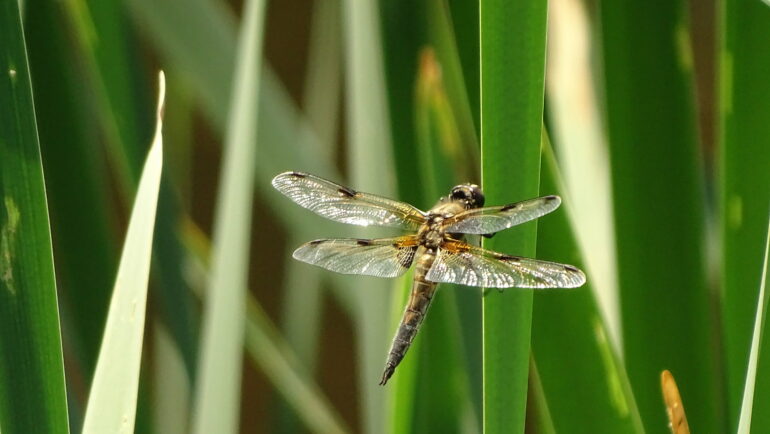River regulation, invasive animal and plant species, global climate change, and pollution—humans are severely impacting the ecosystems of rivers and streams.
“As a result, around 60% of Europe’s rivers are currently not in a good ecological condition. In Germany, this figure is even as high as around 90%. The EU Water Framework Directive, in force since 2000, was intended to remedy this situation, but to date there has been no reliable data on changes in the ecological quality of rivers over time,” explains Prof. Dr. Peter Haase from the Senckenberg Research Institute and Natural History Museum Frankfurt.
Together with his colleague Dr. James Sinclair and an international research team, Haase evaluated the data on river-dwelling invertebrates from 1,365 locations in 23 European countries to examine the temporal trends of anthropogenic influences. The study is published in Nature Ecology & Evolution.
“Based on this unique data set, we were able to quantify the change in ecological quality in rivers on an annual basis since the early 1990s,” explains Sinclair.
Haase adds, “In order to assess the anthropogenic impacts, we first looked at how the biotic communities have changed compared to their initial condition over the course of the study period from 1992 to 2019. This allows us to assess long-term trends in ecological quality at a European level.”
First author Sinclair continues, “We found that ecological quality generally increased from the 1990s until 2010, as did the number of sensitive species, indicating reduced anthropogenic impacts—but this positive trend came to a halt around 2010. The necessary ‘good’ ecological status, as stipulated in the EU Water Framework Directive, has also not yet been achieved on average. The improved water quality is likely due to European measures that were increasingly introduced starting in the 1980s, such as improved wastewater treatment.”
In their overview of ecological water quality, compiled for the first time for all of Europe, the researchers show that improvements have stagnated since the 2010s. The scientists cite new and existing stress factors such as pollution and habitat change, increasing negative effects such as climate change, and emerging problems such as the introduction of new types of pesticides or pharmaceuticals as probable causes.
In a second step, the researchers correlate the determined ecological quality with common indicators such as the abundance or diversity of species or the composition of faunal communities, as well as with common biomonitoring indices that reflect the occurrence of sensitive species.
“Our work is based on the fact that there are numerous studies that report sometimes contradictory changes in biodiversity, i.e., some claim improvements while others claim deterioration. This is due to the fact that some of these studies are limited to individual biomonitoring indices, although it has not been clear to date whether these indices adequately reflect the ecological condition at all,” explains Haase.
“It further becomes apparent that biotic communities show different reactions to anthropogenic influences, depending on the spatial scale. For example, negative impacts can lead to a local decline in abundance or species richness. Regionally, however, no overall change is recorded because the losses are offset by increases in other places. Or there may even be an increase in the number of species if species that can tolerate the changes multiply,” say the scientists from Gelnhausen.
According to the newly published study, the different trends in biodiversity found in many studies may therefore be the result of different spatial scales—local, regional, continental—or different biomonitoring indices. As a further complication, most studies on biodiversity lack baseline data prior to human impact.
“Without baseline data, however, it is difficult to determine whether changes in biodiversity are due to anthropogenic influences or natural fluctuations,” says Sinclair.
“Our results show that without sufficient data over an extended period of time and a careful selection of metrics, biological trends and anthropogenic influences cannot be reliably represented. Among the indicators used to date, only species diversity is a fairly reliable indicator of a change in ecological water quality. This should absolutely be taken into account in future assessments,” concludes Haase.
More information:
James S. Sinclair et al, Multi-decadal improvements in the ecological quality of European rivers are not consistently reflected in biodiversity metrics, Nature Ecology & Evolution (2024). DOI: 10.1038/s41559-023-02305-4
Provided by
Senckenberg Research Institute and Natural History Museum
Citation:
Study finds water quality of Europe’s rivers is generally better, but not consistent (2024, January 26)



